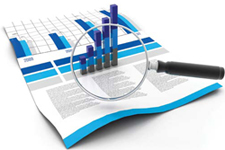Don't Ignore The Business Benefits Of Health Data Analytics

By Ken Congdon
LifeCare Management Services leverages analytics technology to provide a comprehensive, consistent, and accurate view of census and financial data throughout its 27 hospitals — information vital to the organization’s overall business development.
 Clinical data analytics is getting a ton of fanfare these days, and deservedly so. This technology is being applied in innovative ways to the patient data contained in EHRs to identify trends, alert physicians to health risks, encourage proactive preventative measures, and ultimately improve patient outcomes. However, healthcare organizations are also leveraging data analytics to optimize many operational aspects of their businesses — including revenue cycle management and business development — and no EHR is required.
Clinical data analytics is getting a ton of fanfare these days, and deservedly so. This technology is being applied in innovative ways to the patient data contained in EHRs to identify trends, alert physicians to health risks, encourage proactive preventative measures, and ultimately improve patient outcomes. However, healthcare organizations are also leveraging data analytics to optimize many operational aspects of their businesses — including revenue cycle management and business development — and no EHR is required.
LifeCare Management Services is very experienced in this regard. As the management arm of the LifeCare network of long-term acute care hospitals, the organization has been leveraging analytics technology for years to gain a consolidated view of operational and financial performance data across all of its 27 regionally dispersed facilities — information vital to making ongoing business improvements.
Manual Data Collection Breeds Inaccuracy
Much of the data LifeCare uses to make key business decisions (e.g. census, budget, revenue statistics, etc.) is housed in the Healthland financial management system in use at all LifeCare hospitals. While Healthland offered a means for LifeCare to gain a consolidated view of data across systems, it didn’t meet LifeCare’s requirements at the time. The capability to compare data throughout LifeCare hospitals is important to the organization for a variety of reasons.
 “Primarily, we look at the enterprise-wide data collected from all of our hospitals to identify trends or exceptions,” says Mike Wattenbarger, CIO at LifeCare Management Services. “For example, if I’m reviewing the cost of each patient in a specific hospital to our network each day, it helps to have an organizational view for comparison’s sake. This way, we have a more accurate gauge as to which patients truly are the most expensive to our network. We can then drill down to determine the reasons why. Maybe these patients are prescribed expensive medications, or a physician is placing an inordinate amount of lab orders. With this knowledge, we can more accurately and effectively make recommendations and/or take action to control these costs.”
“Primarily, we look at the enterprise-wide data collected from all of our hospitals to identify trends or exceptions,” says Mike Wattenbarger, CIO at LifeCare Management Services. “For example, if I’m reviewing the cost of each patient in a specific hospital to our network each day, it helps to have an organizational view for comparison’s sake. This way, we have a more accurate gauge as to which patients truly are the most expensive to our network. We can then drill down to determine the reasons why. Maybe these patients are prescribed expensive medications, or a physician is placing an inordinate amount of lab orders. With this knowledge, we can more accurately and effectively make recommendations and/or take action to control these costs.”
Prior to implementing data analytics technology, LifeCare took a manual approach to gathering this data from the individual hospitals in its network.
For example, hospital administrators would enter key financial and census data into spreadsheets and email this information to LifeCare Management Services. Not only did this process require a significant amount of labor, but it also left a lot open to interpretation.
“Different hospitals in our network had their own distinct interpretation of how to calculate a patient census,” says Wattenbarger. “One hospital might base its daily patient counts on who was scheduled, others might base it on who actually came into the hospital, and others might only consider patients entered into the financial system in their daily census. These varying calculations led to inconsistency in the data captured and impacted the business decisions we made.”
Furthermore, LifeCare developed a homegrown system to generate custom reports from the data manually collected from each of its 27 facilities. A single IT employee was responsible for the programming behind this reporting system, and Wattenbarger admits that being that dependent on one employee made him anxious. “Nobody else in our company had the skill set to manipulate that reporting system,” he says. “We would have been in a tough spot if they ever decided to leave or if something happened to them.”
Mike Wattenbarger, CIO
In 2006, LifeCare began a process of patient accounting system upgrades that would have required it to completely abandon its homegrown reporting system and write a new one from scratch. Rather than go that route, LifeCare looked at the software upgrades as an opportunity to implement a vendor-supported data analytics solution that could provide the data aggregation and custom reporting capabilities it desired.
SaaS-Based Data Analytics Streamlines Reporting
LifeCare considered several different technology options, but ultimately selected MedeAnalytics Revenue Cycle Intelligence solution largely because of its SaaS architecture. “A SaaS option made a bit more sense to me because it has a monthly subscription fee that makes it easier to predict associated costs,” says Wattenbarger.
 The MedeAnalytics solution integrates with LifeCare’s Healthland financial management system to automate the data collection process throughout the hospital network. At midnight each night, MedeAnalytics extracts patient census and revenue data from Healthland and converts it into a flat file for manipulation. Notification of new data updates is then sent to LifeCare Management Services employees between 7 a.m. and 8 a.m. the following morning. MedeAnalytics provides a dashboard interface that allows employees to submit queries for a variety of different reports — some common standard reports and several custom reporting options.
The MedeAnalytics solution integrates with LifeCare’s Healthland financial management system to automate the data collection process throughout the hospital network. At midnight each night, MedeAnalytics extracts patient census and revenue data from Healthland and converts it into a flat file for manipulation. Notification of new data updates is then sent to LifeCare Management Services employees between 7 a.m. and 8 a.m. the following morning. MedeAnalytics provides a dashboard interface that allows employees to submit queries for a variety of different reports — some common standard reports and several custom reporting options.
According to Wattenbarger, the biggest advantage the new analytics solution provides is data consolidation and consistency. “Nothing is open to interpretation anymore in regard to how the data is calculated,” he says. “The data MedeAnalytics captures all originates from the Healthland system. Therefore, all patient registrations, discharges, claims, and other information have to be entered into Healthland to be included in our analytics reports the following day. Furthermore, MedeAnalytics now serves as the comprehensive source for all of this data enterprise-wide. We didn’t have this type of clarity prior to implementing the solution, and it has provided us with a much more accurate data set on which to base our business decisions.”
The automation the MedeAnalytics platform provides has also eliminated the manual labor previously required to collect the data necessary for daily reports. Furthermore, LifeCare employees find the MedeAnalytics dashboard to be easy to use. Staff members can easily query the platform to pull the exact reports they need. This level of self-service eliminates dependency on IT and ensures that the organization’s reporting capabilities aren’t tied to the expertise of a single employee. Finally, the automated exports and alerts built into the MedeAnaytics platforms streamline the data analysis process. LifeCare executives no longer have to scramble to try to track down the data they need from individual hospitals. Now they are automatically notified via email when data is updated system-wide. LifeCare has been so pleased with its MedeAnalytics revenue cycle solution that it is seeking to leverage additional products and services the vendor provides. Namely, LifeCare hopes to leverage MedeAnalytics ICD- 10 Intelligence solution to aid in its transition to ICD-10 code sets.
